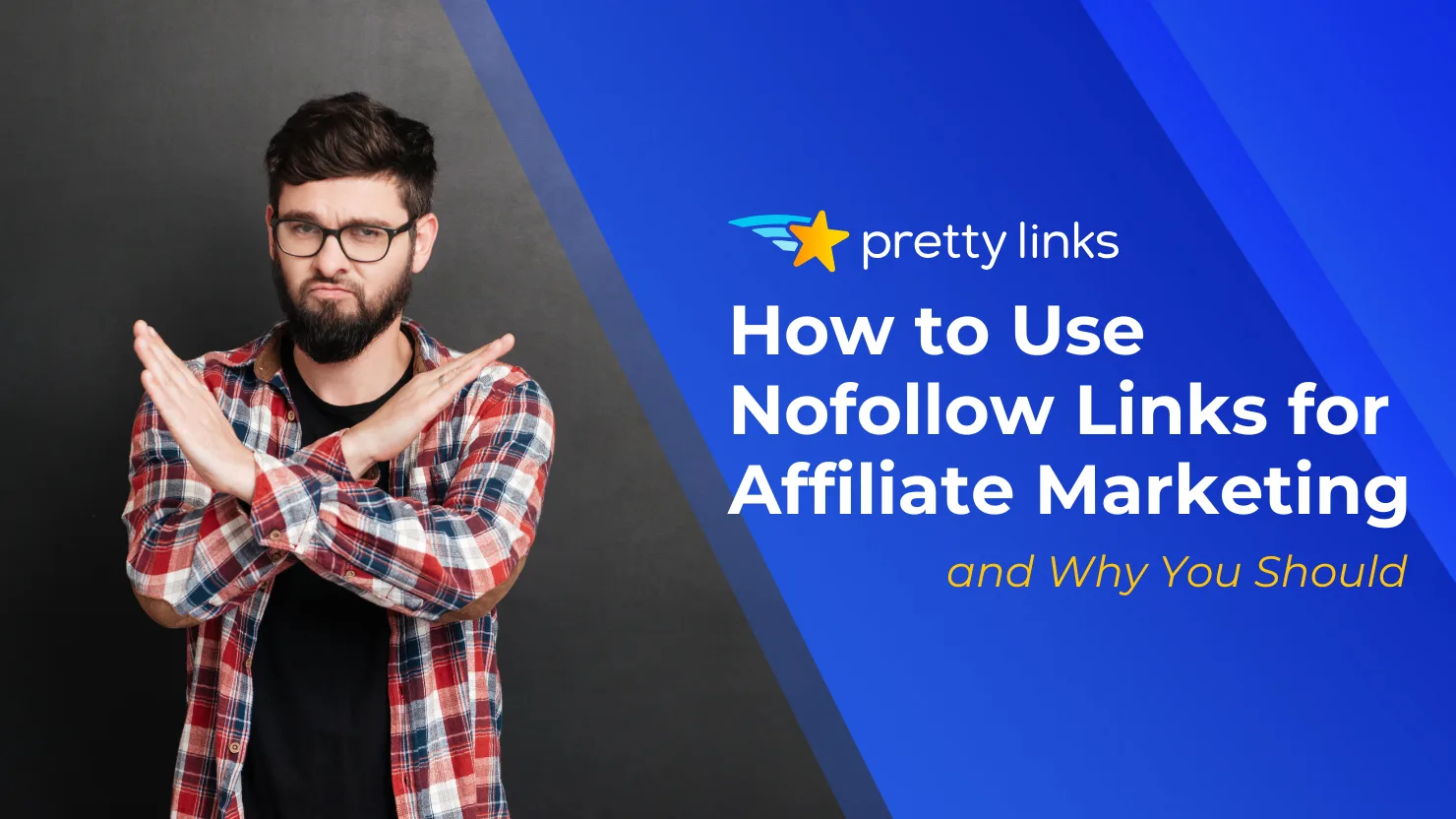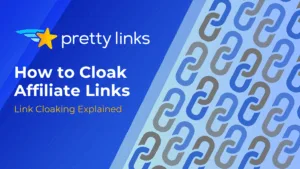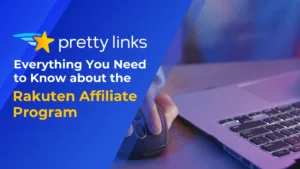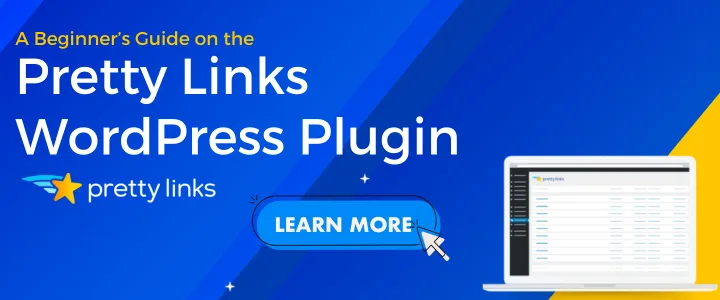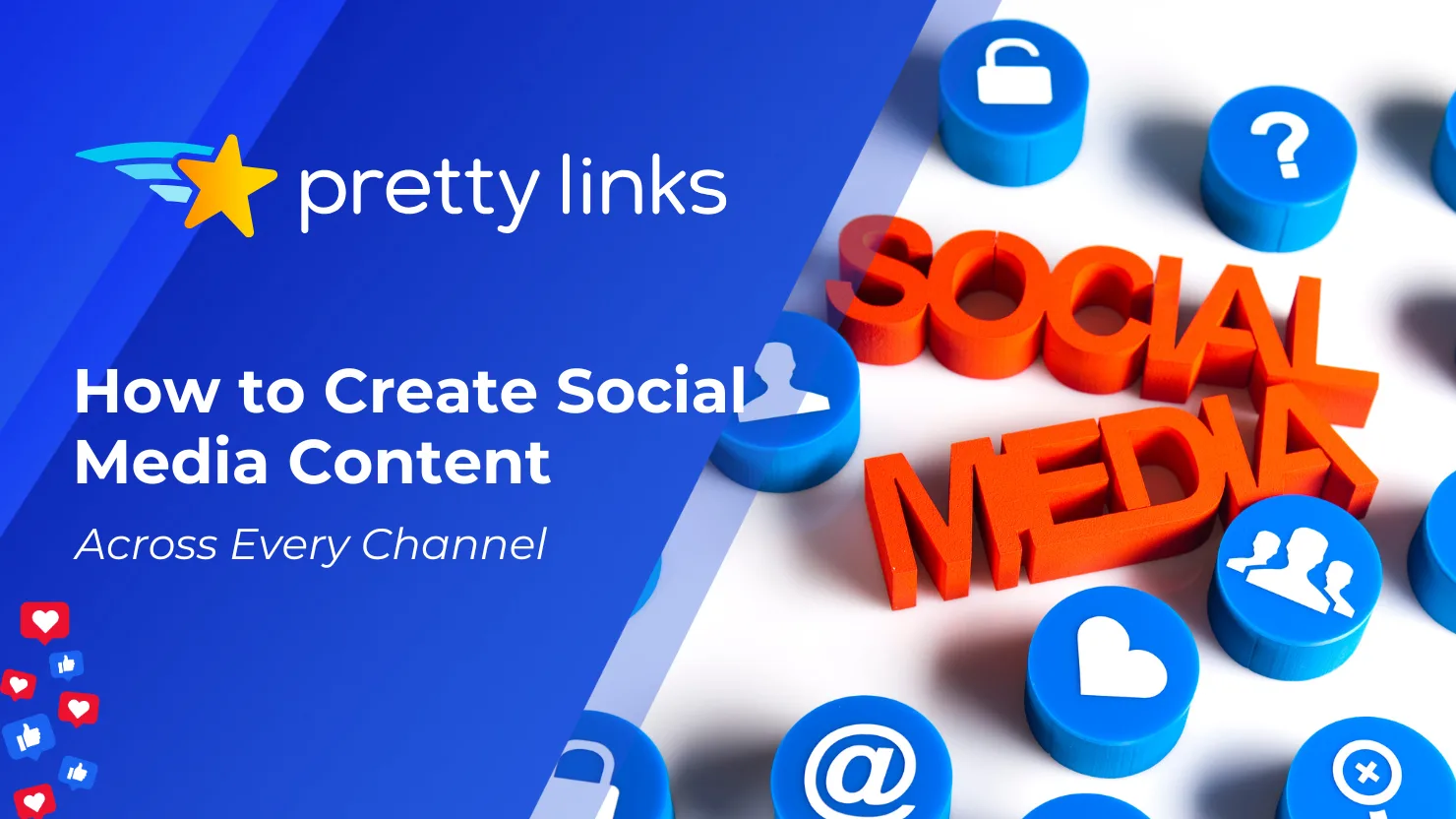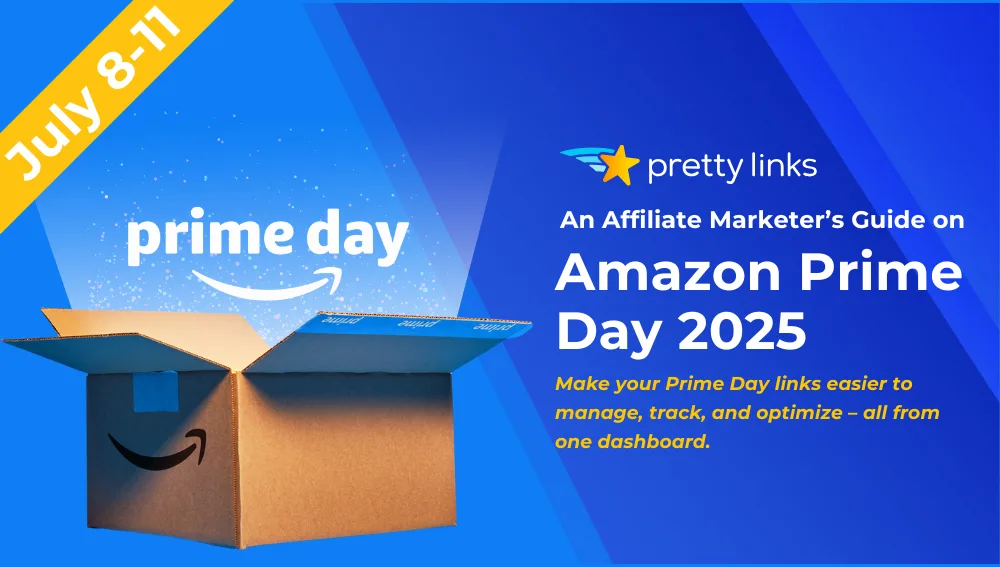Contenido
Google actualiza constantemente su algoritmo de búsqueda, pero una regla para los profesionales del marketing de afiliación siempre es la misma: si tus enlaces están pasando valor SEO cuando no deberían, podrías estar poniendo en riesgo tu clasificación.
¿Cuál es el problema? La mayoría de los enlaces son dofollow por defecto, y muchos vendedores no se dan cuenta de que esto puede jugar en su contra cuando se trata de sus enlaces de afiliados.
Si los motores de búsqueda encuentran demasiados enlaces de afiliación dofollow, podrían marcar su sitio por enlaces no naturales, lo que puede dañar su credibilidad, bajar su clasificación e incluso dar lugar a penalizaciones.
¿Cómo evitarlo? Añadiendo correctamente el atributo nofollow a sus enlaces de afiliado.
En esta guía, explicaremos qué son los enlaces nofollow, por qué son importantes y cómo PrettyLinks puede aplicar automáticamente la configuración correcta a sus enlaces de afiliado, ahorrándole tiempo, protegiendo sus rankings y manteniendo sus enlaces ganando sin preocupaciones.
Enlaces Follow vs Nofollow: ¿Cuál es la diferencia?
Tanto los enlaces follow como los nofollow tienen su lugar en una estrategia de enlaces completa. Saber cuándo utilizar cada uno de ellos te ayuda a mantener la fuerza SEO al tiempo que mantienes el control sobre qué enlaces influyen en los rankings.
¿Qué es un enlace de seguimiento?
A seguir enlace (también conocido como "dofollow") indica a los motores de búsqueda que deben tener en cuenta la página enlazada a la hora de determinar los rankings de búsqueda. Por ejemplo, cuando otro sitio enlaza al suyo con un enlace follow, transmite valor SEO -a menudo denominado "link juice"- que ayuda a su página. mejor posición en los resultados de búsqueda.
Sin embargo, hay situaciones en las que no desea compartir este beneficio SEO con otro sitio. Ahí es donde un nofollow llega el enlace.
¿Qué es un enlace Nofollow?
A enlace nofollow incluye una etiqueta especial [rel="nofollow"] que simplemente indica a los motores de búsqueda NO para pasar el valor SEO a la página enlazada. Dicho de otro modo:
- Detiene el paso del link juice - De nuevo, enlazar a una página suele ayudar a mejorar su posicionamiento. Una etiqueta nofollow bloquea esto, por lo que la página enlazada no obtiene un impulso SEO de su sitio.
- No influirá en las clasificaciones de búsqueda - Los motores de búsqueda ignoran los enlaces nofollow a la hora de calcular las clasificaciones. Esto le permite enlazar libremente sin afectar al SEO.
- Google todavía puede rastrear la página - Un enlace nofollow no garantiza que los motores de búsqueda ignoren la página por completo. Google puede visitarla e indexarla, pero el enlace en sí no contribuirá a su clasificación.
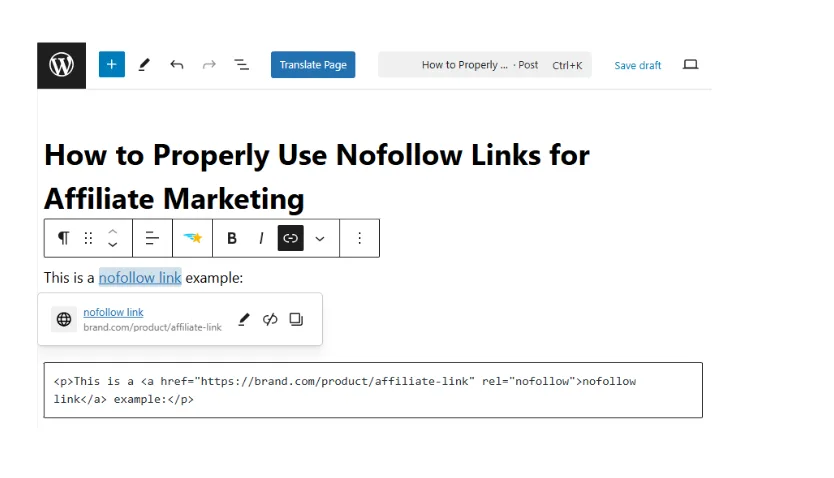
El uso de enlaces nofollow le da más control sobre cómo su sitio interactúa con el contenido externo. Son especialmente útiles para marketing de afiliación, material patrocinado y contenidos generados por los usuariosDe este modo, se garantiza que los enlaces no influyan involuntariamente en las clasificaciones y, al mismo tiempo, generen tráfico.
Cuándo utilizar enlaces nofollow
No todos los enlaces necesitan un atributo nofollow, pero cuando un enlace está vinculado a la monetización, patrocinios, o proviene de una fuente que no controlas, vale la pena añadirlo.
He aquí algunos ejemplos de cuándo debe añadir siempre un atributo de enlace nofollow:
- Enlaces afiliados - Enlaces que le hacen ganar una comisión a través de asociaciones o programas de recomendación. Dado que estos son pagados de alguna manera, los motores de búsqueda los reconocen de manera diferente a las recomendaciones no pagadas.
- Enlaces patrocinados y anuncios de pago - Cualquier enlace incluido en un anuncio, patrocinio o promoción de pago. Tanto si se trata de una entrada de blog patrocinada, un banner o un acuerdo de colaboración, añadir nofollow lo distingue de los enlaces orgánicos.
- Enlaces en comentarios y foros - Contenidos generados por los usuarios a menudo incluye enlaces de fuentes externas. Dado que usted no controla lo que otros publican, nofollow ayuda a evitar que su sitio se conecte involuntariamente a contenido de baja calidad o spam.
El uso de enlaces nofollow en estas situaciones ayuda a mantener fuerte la reputación de su sitio al evitar que el contenido externo afecte a su clasificación o vincule su sitio a algo que usted no pretendía.
Cómo añadir un atributo de enlace nofollow a sus enlaces de afiliado con PrettyLinks (2 maneras)
Añadir manualmente una etiqueta nofollow a cada enlace de afiliado puede no parecer gran cosa al principio, pero con el tiempo, añade pasos innecesarios a su flujo de trabajo.
Si publicas contenidos con regularidad, eso supone un montón de clics, codificación y ajustes adicionales... especialmente en WordPressdonde el proceso requiere editar HTML o ajustar la configuración de cada enlace individual.
PrettyLinks simplifica esta tarea añadiendo automáticamente el atributo nofollow a tus enlaces de afiliado. En lugar de actualizar cada enlace a mano, puede aplicar la etiqueta según sea necesario o automatizarla por completo, para que sus enlaces cumplan la normativa sin trabajo manual.
1. Cómo añadir una etiqueta Nofollow a los nuevos enlaces de afiliados
Cuando añada un nuevo enlace de afiliado a su colección PrettyLinks, vaya a la sección Avanzado en el editor de enlaces. A partir de ahí, simplemente marque la casilla Nofollow caja para aplicar la etiqueta antes de guardar el enlace:
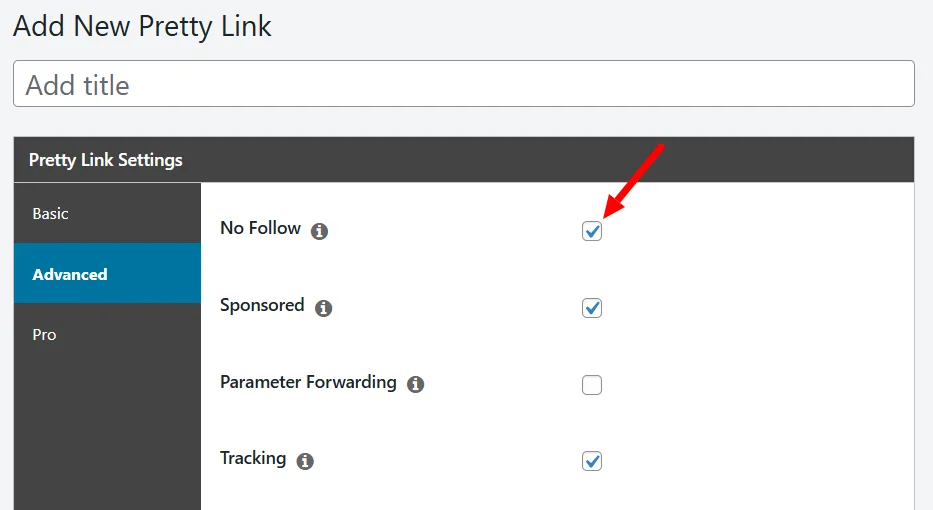
2. Cómo añadir automáticamente una etiqueta Nofollow a todos los enlaces de afiliados
Si quieres que todos tus enlaces de afiliado sean nofollow por defecto, puedes configurarlo una vez y no volver a preocuparte por ello.
Ir a PrettyLinks > Opcionesy, a continuación, vaya a Enlaces . Aquí, encontrará un "Activar Nofollow":
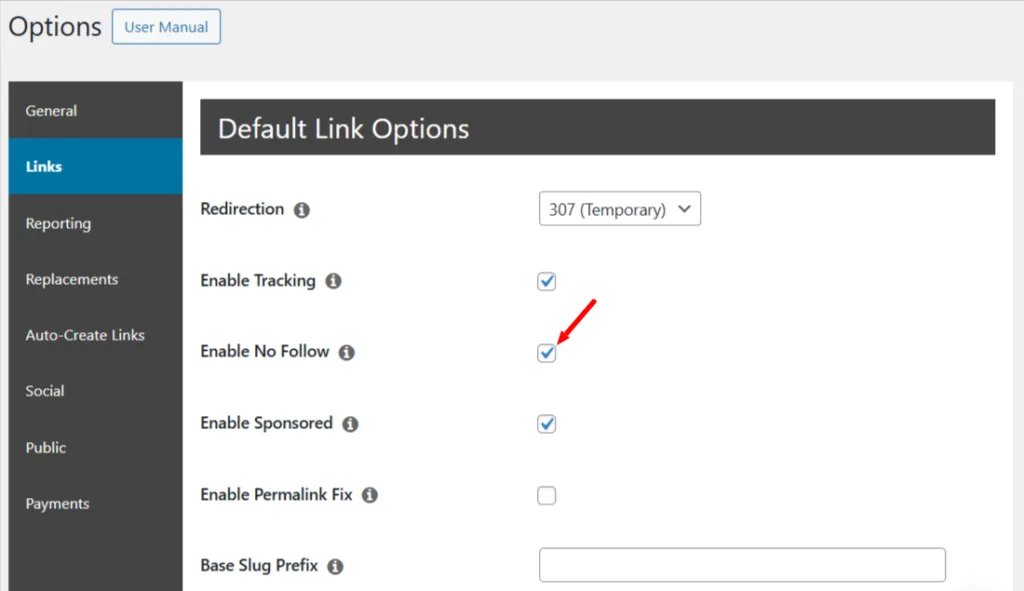
Al marcar esta opción se aplicará automáticamente el atributo nofollow a cada nuevo enlace que crees en PrettyLinks.
Por qué debe utilizar la etiqueta Nofollow para los enlaces de afiliados
Los enlaces de afiliados son una buena forma de monetice sus contenidospero si no se gestionan adecuadamente, pueden afectar negativamente al SEO de su sitio web. Añadir el atributo nofollow garantiza que cumplan su función: ayudarle a ganar sin interferir en el posicionamiento de su sitio web.
He aquí por qué merece la pena hacerlo:
Siga las directrices de los motores de búsqueda
Los motores de búsqueda como Google exigen que los enlaces de afiliación estén claramente marcados, para que los lectores sepan que el enlace está patrocinado o forma parte de una estrategia de monetización.
El uso de nofollow etiqueta claramente los enlaces de afiliados, haciendo evidente que no son recomendaciones orgánicas. Esta transparencia ayuda a su sitio a cumplir con las directrices de búsqueda y evitar posibles penalizaciones en la clasificación.
Mantenga intacta la autoridad de su sitio web
Cada enlace dofollow transmite valor de clasificación a la página a la que enlaza, indicando a los motores de búsqueda que se trata de un recurso relevante y de confianza. Aunque los enlaces de afiliación son auténticos apoyos, también son asociaciones pagadas, lo que significa que no deberían influir en las clasificaciones SEO.
Al utilizar nofollow, está indicando a los motores de búsqueda que, aunque usted respalda el producto, el enlace en sí no debe pasar valor de clasificación. Esto ayuda a proteger la autoridad SEO de su sitio, manteniendo su fuerza de clasificación. centrado en su propio contenido en lugar de distribuirlo entre varios sitios afiliados.
Mantener la transparencia y la confianza
Los lectores y los motores de búsqueda esperan honestidad sobre los contenidos monetizados. La FTC también exige divulgación clara de las relaciones de afiliación.
El uso de nofollow ayuda a reforzar la transparencia al separar el contenido editorial de los enlaces promocionales. Muestra a los lectores que, aunque usted respalda los productos que promociona, esos enlaces forman parte de una asociación comercial. Cuando su audiencia sabe que puede confiar en sus recomendaciones sin intenciones ocultas, es más probable que se comprometan, vuelvan y conviertan.
. . .
Utilizar nofollow para los enlaces de afiliados es un paso sencillo pero esencial para proteger su SEO, mantener la credibilidad de su sitio y seguir las mejores prácticas del sector.
¿Qué pasa si no utilizas Nofollow para los enlaces de afiliados?
No aplicar correctamente el atributo nofollow a sus enlaces de afiliado puede acarrear una serie de problemas, desde penalizaciones SEO hasta una pérdida de credibilidad. Esto es lo que está en juego:
Google puede penalizar su sitio
Si Google detecta demasiados enlaces de afiliación dofollow, puede marcar su sitio como enlace manipulador. Esto podría dar lugar a:
- Una penalización por acción manual, que puede hacer caer su clasificación o incluso eliminar páginas de los resultados de búsqueda.
- Una reputación SEO más débil, lo que dificulta el posicionamiento, incluso después de eliminar los enlaces.
Solucionar una penalización de Google requiere un largo revisión de sus enlaces, limpiezas manuales y una solicitud de reconsideración.
Pérdida del valor SEO de su sitio web
Los enlaces afiliados Dofollow envían poder de clasificación a sitios externos, lo que significa que su propio sitio pierde parte de su fuerza SEO. Con el tiempo, esto puede:
- Dificultar la clasificación de su contenido en resultados de búsqueda competitivos.
- Provocar un descenso gradual del tráfico orgánico y de la autoridad.
El uso de nofollow ayuda a mantener el poder de clasificación dentro de su sitio, por lo que sus páginas siguen siendo competitivas en los resultados de búsqueda.
Su público podría perder la confianza
El marketing de afiliación funciona mejor cuando es transparente. Si los visitantes se dan cuenta de que tus enlaces de afiliado no están debidamente divulgados o parecen estar influyendo injustamente en las clasificaciones SEO, podría:
- Dañar la credibilidad, haciendo que su contenido parezca excesivamente promocional.
- Violar las directrices de la FTC, que exigen una información clara sobre los enlaces de pago.
Mantener los enlaces de afiliación nofollow protege la reputación de su sitio web garantizando al mismo tiempo el cumplimiento de las normas legales y de SEO.
. . .
Los enlaces de afiliados deben apoyar su estrategia de ingresos, no disminuirla perjudicando su SEO. Al añadir el atributo de enlace nofollow, puede proteger su posicionamiento, mantener la autoridad y cumplir las directrices de los motores de búsqueda.
Errores comunes de los enlaces nofollow que hay que evitar
Cuando utilice enlaces nofollow, tenga cuidado con algunos errores comunes que pueden perjudicar su SEO o causar confusión. Estos son los principales errores que debe evitar:
1. Olvidar añadir Nofollow a los enlaces de afiliados
Los enlaces de afiliados están pensados para la monetización, no para el SEO. Dejarlos dofollow puede desviar el poder de clasificación de su sitio, enviando link juice a páginas externas en lugar de mantenerlo centrado en su contenido. Con el tiempo, esto puede debilitar la autoridad de su sitio y reducir la eficacia de su estrategia de enlaces internos.
✅ Arréglalo: Aplique siempre nofollow a los enlaces de afiliado, ya sea de forma manual o automática mediante una herramienta como PrettyLinks, para cumplir la normativa y proteger su posicionamiento.
2. Uso excesivo de Nofollow en enlaces internos
Nofollow está pensado para enlaces salientes, no para enlaces entre páginas de su propio sitio. Añadir nofollow a los enlaces internos puede perjudicar su SEO al impedir que los motores de búsqueda rastreen y clasifiquen correctamente su contenido.
✅ Arréglalo: Mantenga los enlaces internos dofollow para que Google pueda entender la estructura de su sitio y transmitir valor SEO entre sus páginas. Reserva nofollow para enlaces de afiliados, contenido patrocinado y sitios externos que no sean de confianza.
3. Asumir que Nofollow resuelve todos los problemas de SEO
Aunque nofollow impide que el valor de clasificación pase a una página enlazada, no impide que los motores de búsqueda rastreen o indexen esa página. Google puede seguir los enlaces nofollow e incluso incluirlos en sus cálculos de clasificación en algunos casos.
✅ Arréglalo: Si necesita evitar por completo que una página se indexe, utilice la etiqueta [noindex] en lugar de (o además de) nofollow.
. . .
Evitando estos errores, puede utilizar nofollow eficazmente para proteger el SEO de su sitio sin dañar involuntariamente su clasificación o visibilidad.
Conclusión
Los enlaces nofollow ayudan a mantener un buen posicionamiento de su sitio y a que su estrategia de afiliación funcione como es debido. Aunque añadir el atributo nofollow puede parecer una tarea sin importancia, pasarlo por alto puede causar grandes quebraderos de cabeza, como una caída en las clasificaciones de búsqueda, la pérdida de confianza de la audiencia o incluso problemas de cumplimiento de la FTC.
¿Pero actualizar manualmente cada enlace? Es tiempo mejor empleado en otra cosa.
Con PrettyLinks, no tiene que preocuparse de que se le escape un enlace o de cometer un error. Aplica automáticamente el atributo nofollow, por lo que cada enlace de afiliado se gestiona de la manera correcta, lo que le permite centrarse en generar confianza, impulsar las conversiones y ganar más sin tener que preocuparse por los detalles técnicos.
Hablemos de ello. ¿A qué preferirías dedicar tu tiempo en lugar de actualizar manualmente los enlaces de afiliación? Probablemente hojearía vídeos de cachorros sin culpa durante una hora entera 🐶 ¡Comparte tu respuesta en la sección de comentarios!
Si te ha gustado este artículo, no dejes de seguirnos en Facebook, Twitter, Pinteresty LinkedIn¡! Y no olvides suscribirte en el caja abajo.
